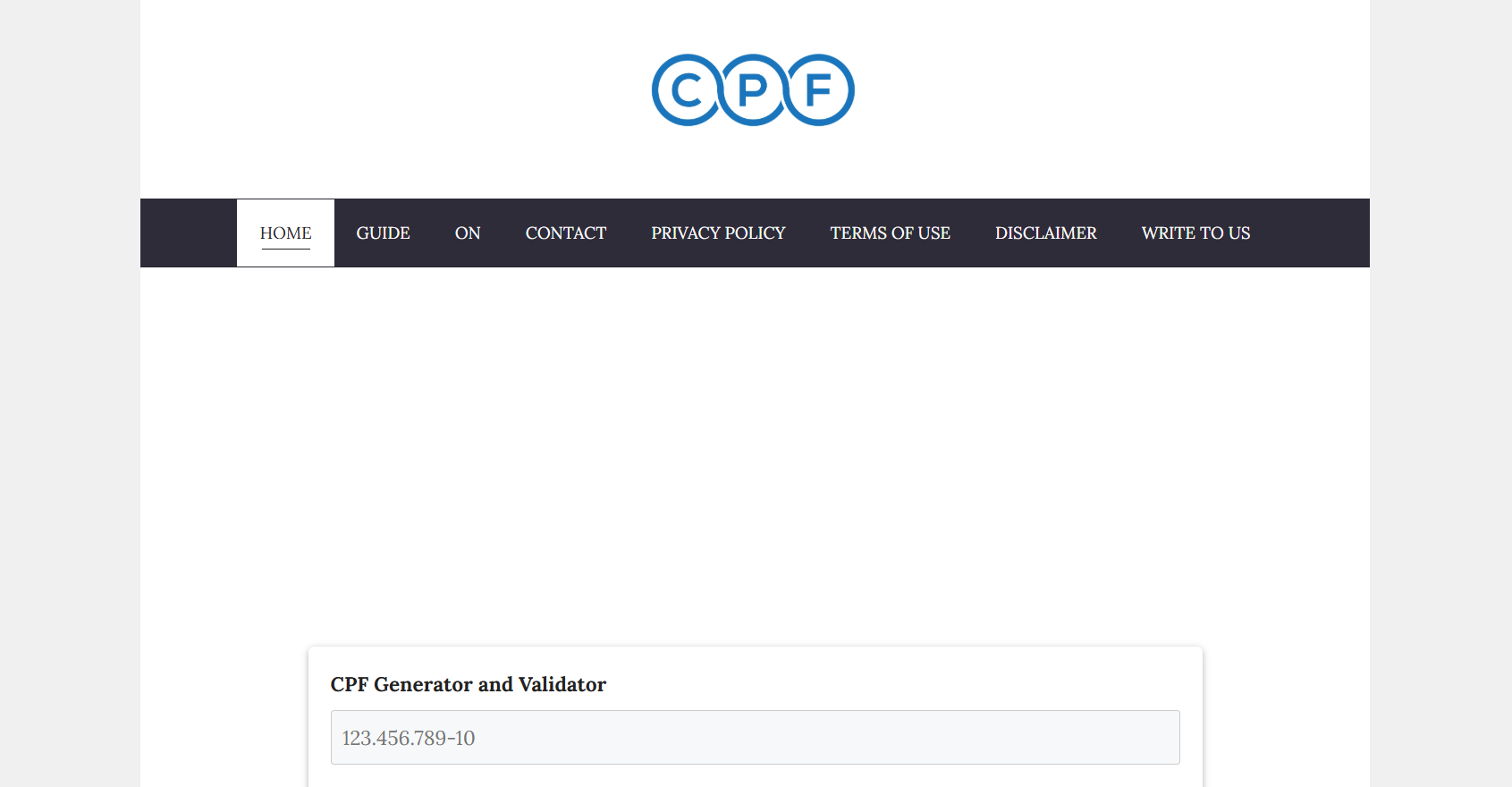What Is the Purpose of a CPF Generator?

CPF generators have become common tools on the internet, especially among developers, system testers, and technology professionals. Despite their popularity, many people still have doubts about their purpose, legality, and best practices for their use.
This article explains in detail what a CPF Generator is for, how it works, why it is widely used in the digital environment, and the legal and ethical implications involved in its usage.
Understanding What a CPF Is
The CPF, or Cadastro de Pessoas Físicas (Natural Persons Register), is a unique number issued by the Brazilian Federal Revenue Service. It identifies a citizen within the national tax system and is required for several everyday activities such as opening a bank account, filing income tax, and signing contracts.
Each CPF is composed of 11 digits, with the last two being a verification code generated from the first nine digits using a mathematical algorithm.
How a CPF Generator Works
A CPF Generator is a system that creates valid CPF numbers based on the Federal Revenue algorithm, but that do not correspond to real individuals. It uses mathematical rules to generate random numbers that pass format validation.
These numbers can be classified as:
- Valid (but non-existent) CPFs: Correctly generated but not yet assigned to any real person.
- Invalid CPFs: Intentionally created for tests that don’t require verification and can be easily identified as fictitious.
Common Uses for a CPF Generator
System and Software Testing
One of the most legitimate and frequent uses of a CPF Generator is in development environments. Developers use fictitious CPFs to test registration forms, database integrations, API requests, and validation workflows.
Using real CPFs in these cases could violate Brazil’s LGPD (General Data Protection Law), so using fake numbers is a safe and recommended practice.
E-commerce and Online Form Simulations
E-commerce platforms often require full personal data, including CPF, to simulate purchases or checkout flows. In such cases, generated data helps QA (Quality Assurance) teams simulate the user journey without compromising real user privacy.
Technical Team Training
During training sessions for developers, data analysts, or software testers, fictitious data sets are commonly used. A CPF Generator provides realistic yet safe samples to teach best practices in programming, information security, and system integration.
Algorithm Validation
Technology and math students who study verification algorithms like the CPFs can use generators to check if their implementations follow the correct logic. It’s a valuable educational tool for practicing programming and computational logic.
Legal Aspects of Using Generated CPFs
Although CPF Generators are not illegal, their misuse can raise serious issues. Using generated CPFs to deceive systems, bypass checks, or commit fraud is a crime under the Brazilian Penal Code.
Legal risks associated with misuse include:
- Identity fraud
- Document falsification
- Unauthorized use of identity
Therefore, it’s essential to use CPF Generators strictly in test, simulation, and educational environments — never in real financial or contractual processes.
Difference Between a CPF Generator and a Validator
Many platforms offer both a CPF Generator and a Validator. Although related, their functions differ:
- CPF Generator: Creates a new number based on the CPF algorithm.
- CPF Validator: Checks whether a provided CPF is mathematically valid and, in some cases, whether it’s active in the Federal Revenue system.
This distinction is important for developers looking to include safeguards against invalid registrations or corrupted data.
Benefits of CPF Generators for Developers
For IT professionals, a reliable free CPF Generator offers several advantages:
- Quick and easy access: No registration or installation needed
- Batch generation: Useful for simulating large volumes of data
- Masked or unmasked formats: Helpful in testing different data input formats
- Valid numbers for system testing: Ensures the system correctly recognizes the CPF structure
These features speed up testing and increase efficiency in development processes.
Cautions When Choosing an Online CPF Generator
Not all generator sites are trustworthy. Some may pose risks such as:
- Malware insertion
- Unauthorized data collection
- Redirection to malicious pages
To avoid risks, use well-known platforms with good reputations, no excessive pop-ups, and no requests for personal data to generate a CPF.
Also, always ensure the site has a security certificate (HTTPS) and does not encourage illegal use of generated numbers.
Ethics in Using Generated Data
Even when using a reliable generator and a technically valid CPF, ethical use of the data must be considered.
In software projects, it’s common for developers to forget to remove test data before the final release. This can affect reports, metrics, and even the actual functioning of the application.
Ethical Recommendations
- Use staging or QA environments for testing
- Keep fictitious data separate from production data
- Document generated the CPF usage for traceability
Digital ethics involves responsibility in data handling — even with fictitious information — and includes attention to system security and privacy.
Alternatives to CPF Use in Testing
Despite the usefulness of CPF Generators, some companies prefer using more generic fictitious data, such as:
- Custom numeric identifiers (e.g., client codes)
- Anonymized data through masking systems
- Mock tools that simulate entire profiles, not just CPFs
These approaches are common in projects seeking full compliance with data protection regulations like LGPD and GDPR.
Recommendations for Responsible Use
When integrating generated CPFs into systems or projects, best practices include:
- Commenting code to indicate simulated data use
- Not exposing generated numbers in public environments or open APIs
- Avoiding submission of generated data to real services (e.g., banks, carriers, government systems)
This helps preserve system integrity and prevents incidents that may be interpreted as fraud attempts.
Conclusion
CPF Generators are useful, practical, and safe tools when used responsibly. They play an essential role in development, testing, simulation, and learning environments, helping to avoid misuse of real data.
However, their use requires legal and ethical awareness. Using these tools conscientiously helps avoid legal trouble and reinforces best practices in software development and simulated data usage.



